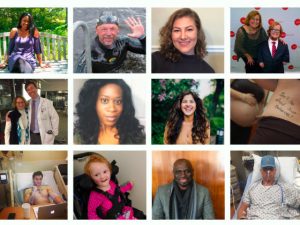Couple with Spina Bifida Build a Life Together
Kerry and Dan Wallace have a message for people living with spina bifida and other disabilities: Your limitations don’t define you.
“There are very few things left that are not able to be accomplished by someone with a disability,” says Kerry. “You just have to want to do it.”
Both Kerry, 53, and her husband Dan, 45, were born with spina bifida, a birth defect in which a developing baby’s spinal cord fails to form properly. And while the couple has had to make some accommodations over the years, they live active and fulfilling family, professional, and community lives. Here is how they got to where they are today.
The Diagnoses
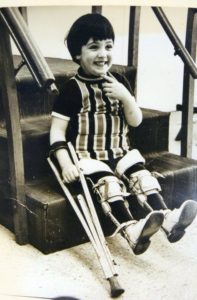


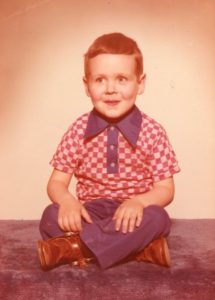


“I could be left to have an infection set in and die, or they could do surgery to close my spine and see what happens after that,” Kerry says the doctor told her father. “To him there was no decision. Surgery to close her spine occurred when she was five hours old.”
Eight and a half years later, in 1970, Dan was born. A few hours later, after his father had left the hospital to be at home with Dan’s two older brothers, the doctor broke the news to his mother. Dan’s spina bifida wasn’t instantly obvious to the hospital staff because his lesion was covered, meaning his spinal cord wasn’t exposed to the air like Kerry’s was. Instead, it looked like there was a tumor the size of a golf ball at the base of his spine.
“As far as severity goes, I wasn’t in the same risk category that Kerry was,” says Dan.
Fitting In
Both Kerry and Dan credit their can-do attitudes toward being treated as equals among their siblings. Kerry is one of six siblings, who are all very close in age, and says that whatever her brothers and sister did, she did, too. Even if the family activity of the day was playing touch football in the backyard. “My ‘caught pass’ was my dad hitting me with the ball,” she recalls. “I may have done it differently, but I did it.”
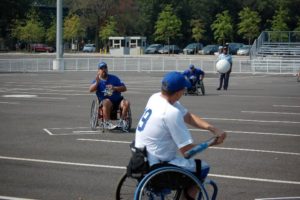


For him, that meant compensating for his disability by forcing himself to be more social, joke around a lot, and do anything he could to take the attention away from his physical disability. His signature sense of humor still shows through in all that he does to this day.
“I think as a kid I kind of felt people didn’t understand. I think even as an adult people don’t understand my disability and the level it affects me,” says Dan. “I don’t think I will ever find my place in the world as far as am I disabled or am I not disabled. I’m in both worlds and I don’t fit in 100 percent for what people’s expectations are for being disabled or not disabled. I consider myself a double agent because I have a disability but I can go undercover in the nondisabled world and I can get by.”
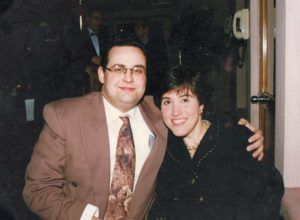


Finding Love
How do two people living with the same condition halfway across the country meet and fall in love? Dan hasn’t needed to wear leg braces since he was 11 and says he’s often felt like he was living between two worlds—the “nondisabled world” and the “disabled world.” Because of this, he had always had trouble feeling understood in relationships. 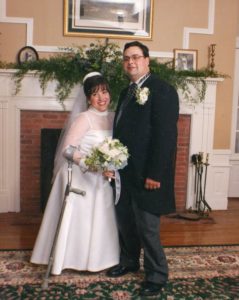


Both liked how the other person had a disability, but lived a normal and active life. And they enjoyed the shared understanding that comes with the territory. The couple dated for a couple years, during which time Dan did a lot of flying back and forth between Detroit and New York. Eventually, they decided to settle down in Garden City, New York. After moving to New York, Dan completed his MA degree and is now a High School Social Studies Teacher. The two have been happily married for 17 years.
Preparing for a Family
Experts believe genetic, nutritional, and environmental factors all play a role in causing spina bifida. The genetic variable of having two parents with spina bifida made the couple educate themselves before starting a family. What if their son or daughter had spina bifida, too?
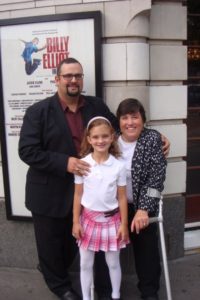


“By planning this out and not going into it blindly there was a 90 percent chance things would turn out fine,” says Dan. “We decided to roll the dice and the odds were in our favor.”
Their daughter Kate was, indeed, born without spina bifida and today is a healthy and happy 15-year-old.
[tweet_box design=”default”]Your limitations don’t define you. #HealthStoriesProject [/tweet_box]
Living with No Regrets
Twenty years after Dan decided to call Kerry, the couple are very proud of the life they have built together because of and in spite of spina bifida.
“We don’t do a lot of ‘why us?’ We have appreciated each other and everything we’d done these past 20 years and looked at every day as a blessing,” says Dan. “People don’t realize how much work and how much of a struggle it has been to get where we are today. People look at us and think everything’s fine and everything’s normal, but there’s a lot of work and effort that goes into daily life of a disabled couple. But we wouldn’t do it any other way.”
Are you or someone you care about living with a disability? Sign up to share your experiences with Health Stories Project!

